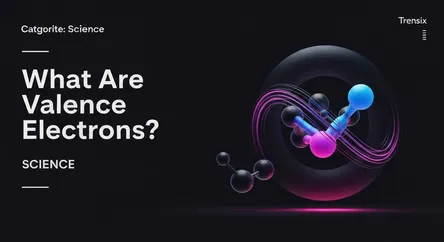Science
What Are Valence Electrons?

Discover valence electrons, the outermost atomic particles that dictate an element's chemical reactivity and its ability to form bonds with other atoms.
What is it?
Valence electrons are the electrons located in the outermost shell of an atom. Being the farthest from the atomic nucleus, they are the most weakly attracted and are the primary participants in chemical reactions and the formation of bonds. The number of valence electrons determines an element's chemical properties. For main-group elements on the periodic table, the group number often indicates the quantity of valence electrons. For example, carbon in group 14 has four valence electrons, while oxygen in group 16 has six. This count is crucial for predicting how an atom will behave.
Why is it trending?
Understanding valence electrons is a cornerstone of chemistry because it explains why chemical reactions occur. Atoms are most stable when their outermost electron shell is full. This drive for stability, often called the octet rule, governs how atoms interact. They will gain, lose, or share their valence electrons with other atoms to achieve a full outer shell. This principle allows scientists to predict an element's reactivity, what types of bonds it will form (ionic or covalent), and how it will combine with other elements to create new substances.
How does it affect people?
The behavior of valence electrons dictates the physical world. The formation of every chemical compound, from water (H₂O) to table salt (NaCl), is the result of atoms sharing or transferring these electrons. This principle is fundamental to countless applications. The electrical conductivity of metals and the properties of semiconductors, which are the foundation of all modern electronics, are directly related to the freedom of their valence electrons. The development of new materials, medicines, and technologies all rely on manipulating the interactions of these crucial subatomic particles.